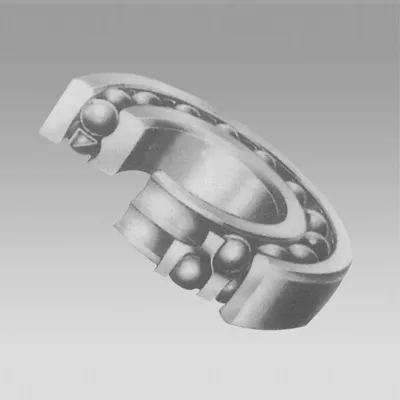
10 月 . 12, 2024 20:34 Back to list
cylindrical roller bearing dimensions
Overview of Cylindrical Roller Bearing Dimensions
Cylindrical roller bearings are a key component in many mechanical systems, providing support and reducing friction for rotating or moving parts. Their unique design allows them to carry heavy loads while maintaining high speeds. Understanding the dimensions of cylindrical roller bearings is essential for selecting the right bearing for a specific application, as these dimensions influence performance, compatibility, and overall functionality.
Standard Dimensions
Cylindrical roller bearings are characterized by their cylindrical rollers that are positioned between an inner and outer ring. The basic dimensions of these bearings are defined by several key parameters, including the inner diameter (d), outer diameter (D), and width (B). The inner diameter is the space where the bearing fits onto the shaft, while the outer diameter fits into the housing. The width, or height of the bearing, is critical as it affects the load-carrying capacity.
Typically, cylindrical roller bearings follow a standardized sizing system established by organizations such as ISO (International Organization for Standardization). This ensures that bearings produced by different manufacturers can be interchanged, which is vital for maintenance and repairs.
Radial and Axial Loads
The dimensions of cylindrical roller bearings play a significant role in their load-bearing capabilities. These bearings are designed primarily for radial loads, which are forces acting perpendicular to the shaft. However, they can also accommodate some axial loads, which are parallel to the shaft. The ratio of the inner and outer diameters relative to the width can influence the load ratings, making it crucial to choose the correct size based on the application's specific requirements.
cylindrical roller bearing dimensions

Types of Cylindrical Roller Bearings
There are several configurations of cylindrical roller bearings, including single-row, double-row, and multi-row options. Each type has its own dimensional variations and load capacities. Single-row cylindrical roller bearings are commonly used for moderate radial loads, while double-row designs offer higher load capacities. Multi-row configurations are employed in specialized applications requiring even greater support and stability.
Selecting the Right Dimensions
When selecting a cylindrical roller bearing, engineers must consider not only the basic dimensions but also additional factors such as the cage design, lubrication methods, and environmental conditions. For example, bearings with a brass cage may perform better under high-speed conditions compared to those with a polyamide cage. Additionally, the operating environment—such as temperature extremes or exposure to contaminants—can influence the choice of bearing dimensions.
Conclusion
In summary, understanding the dimensions of cylindrical roller bearings is crucial for engineers and maintenance professionals alike. The precise measurement of inner and outer diameters, width, and the type of bearing plays an essential role in ensuring optimal performance and longevity of mechanical systems. By carefully selecting the appropriate bearing dimensions, users can enhance the reliability and efficiency of their applications, ultimately leading to improved operational success.
Latest news
-
Unlocking Efficiency with Spherical Roller Bearings
NewsOct.29,2024
-
The Ultimate Guide to Thrust Ball Bearings
NewsOct.29,2024
-
The Power of Thrust Roller Bearings: Engineered for Excellence
NewsOct.29,2024
-
The Power of Deep Groove Ball Bearings for Your Application Needs!
NewsOct.29,2024
-
The Power and Performance of Cylindrical Roller Bearings
NewsOct.29,2024
-
High-Quality Ball Bearing Manufacturing Machines
NewsOct.29,2024
